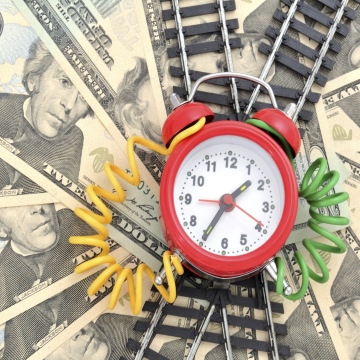Hedging Your Portfolio Against Quantitative Easing

When there is an economic slowdown, the government has a variety of ways to attempt to stimulate the economy: lowering interest rates, increasing credit through lending, offering tax credits or injecting more money into the system through the buying up of bonds, which is called Quantitative Easing (QE).
These fiscal techniques to manage the economy have a tremendous impact on investors – and some of it isn’t good. For example, with QE, the government (and therefore the taxpayer) are essentially taking on more debt that has to be repaid. If the expected economic growth doesn’t materialize or match the printing of new money, inflation spikes.
However, investors aren’t helpless. By hedging, and building a diversified portfolio, investors can mitigate some of the impact of central bankers attempts to stimulate the economy.
Central Banks and Quantitative Easing
In response to the financial crisis, Ben Bernanke, former Federal Reserve Chairman, embarked on the first round of U.S. quantitative easing with the purchase of $600 billion of mortgage-backed securities. By March of 2009, the Fed’s holdings had almost tripled to $1.75 trillion. The Fed started a second program, QE2, in 2010 before launching its third open-ended $85 billion-a-month program in late 2012. The Fed may be looking once more to printing presses with recent comments from current Federal Reserve Chairwoman Janet Yellen, suggesting that she may consider further QE efforts to help lift the pallid U.S. economy.
Their counterparts in Europe, most notably Mario Draghi, president of the European Central Bank, began “firing a cash bazooka” in March of 2015. The ECB’s quantitative easing program pumped one trillion euros into the system and in March of 2016 increased the bond-buying program to 80 billion euros a month. In conjunction, global central banks have further cut main interest rates to historic lows. Joining the Bank of Japan, Sweden, Switzerland, Denmark and the ECB has adopted negative interest rates in the effort to stimulate the European Economy.
Even with the extraordinary measures being taken with QE programs, the global economy is still showing lackluster signs of growth. In response, savvy investors are seeking shelter in lower risk assets or hedges to their current allocations. Bonds typically provided this shelter, as they are low risk and low return, but are now facing stronger headwinds due to the zero and negative interest rates across the globe.
Gold and Silver – hedging against inflation
The shake-up or uncertainty in the bond market has proven bullish for precious metals, which have historically been one effective tool used to protect wealth because it’s considered a contra asset. Most precious metals also hedge investors against inflation because commodities have a tendency to appreciate during times of higher inflation.
Each investors’ needs vary but protecting one’s portfolio against global central bank stimulus can be strategically achieved with a solid diversification strategy including one that owns precious metals.
More Information
-

5 Disaster Preparedness Tips
Earthquakes, power grid failures, pandemics, cyber attacks, nuclear war, terrorism, financial and economic collapse; the list of disasters that would potentially ruin society as we know it goes on and on. -

What is the Gold to Silver Ratio?
In the simplest of terms, the gold-silver ratio is calculated by determining how many ounces of silver it takes to purchase one ounce of gold.